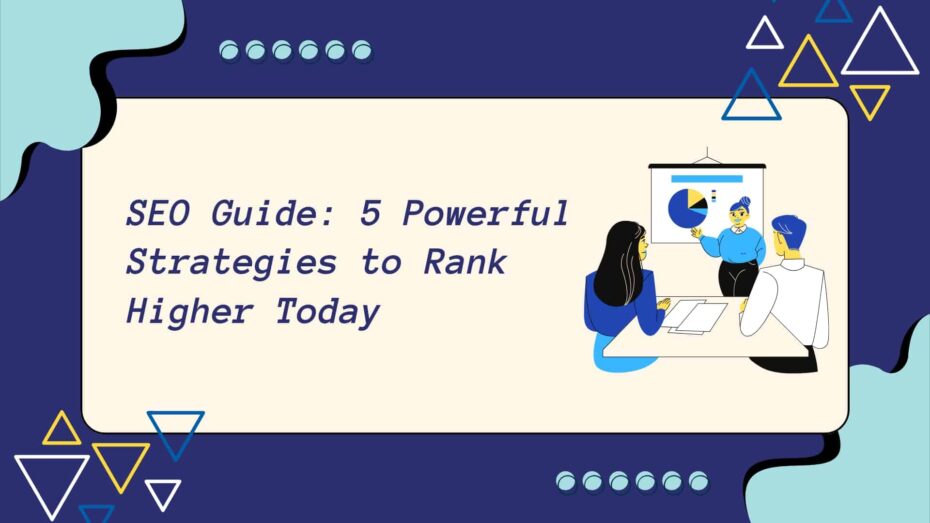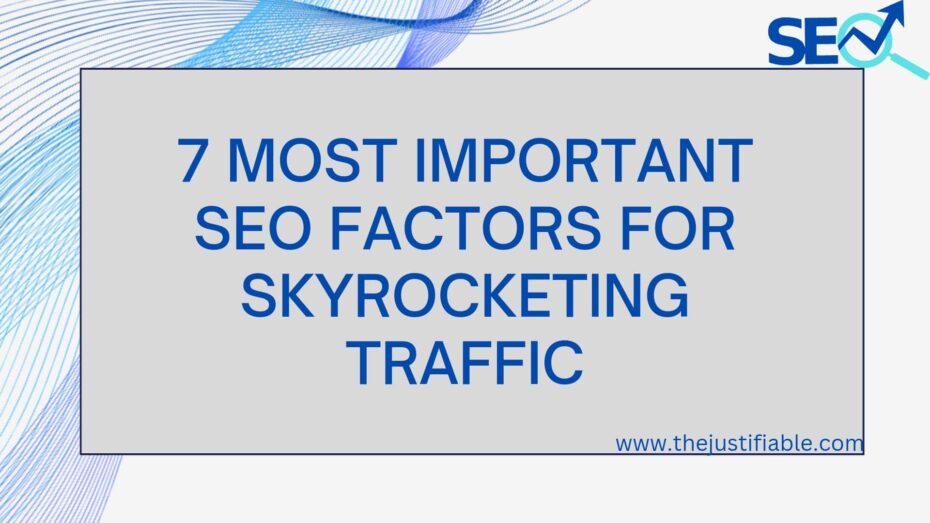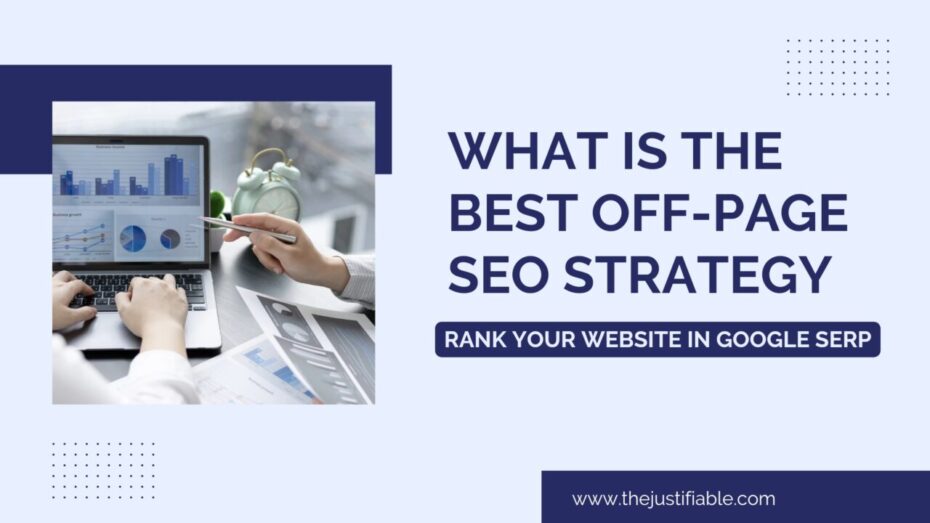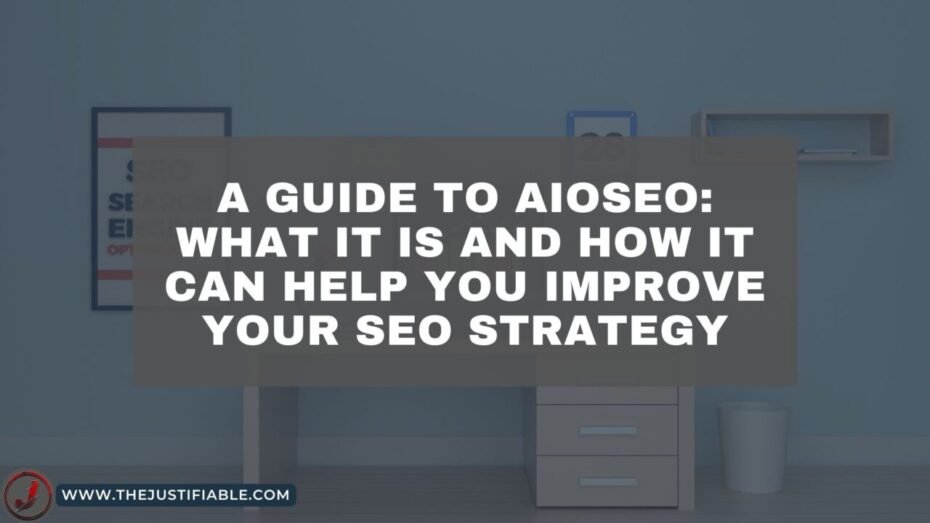Disclosure: This post contains affiliate links, which means that if you click on them and make a purchase, I will receive a commission. Read our Disclaimer for More.
This SEO guide is your key to unlocking the full potential of your website, ensuring it not only reaches but also resonates with your target audience. With the landscape of digital marketing constantly evolving, understanding and applying SEO strategies has never been more crucial.
SEO, or Search Engine Optimization, is the art and science of enhancing your online presence to rank higher in search engine results. This guide is designed to demystify SEO practices, making them accessible and actionable for businesses of all sizes. Whether you’re a budding entrepreneur or part of a well-established company, mastering SEO can significantly amplify your online visibility.
Our journey through this guide will introduce you to powerful strategies that are both effective and ethical. We’ll explore the nuances of search engine algorithms, the importance of keyword research, and the impact of high-quality content. By the end of this guide, you’ll be equipped with the knowledge and tools to elevate your website’s ranking, drive more traffic, and ultimately achieve your business goals.
Understanding SEO: The Key to Online Visibility
Why is SEO considered a cornerstone of digital marketing? How does mastering SEO strategies contribute to the success of your online presence? These are questions that many businesses grapple with as they strive to enhance their visibility online. SEO, or Search Engine Optimization, is more than just a buzzword; it’s a crucial element of your digital marketing strategy that can determine the reach and impact of your online presence.
SEO encompasses a wide range of practices designed to improve your website’s ranking on search engine results pages (SERPs). From optimizing your website’s structure and content to building a strong profile of backlinks, SEO is about making your site more attractive to search engines and users alike. The goal is to increase visibility, which in turn drives more traffic to your site.
But SEO is not a one-size-fits-all solution. It requires a deep understanding of your audience, as well as the algorithms that search engines use to rank content. By integrating relevant keywords, creating high-quality content, and ensuring your site is user-friendly, you’re laying the groundwork for a successful SEO strategy. This approach not only boosts your site’s visibility but also enhances the user experience, making it more likely that visitors will engage with your content and return in the future.
The Evolution of SEO: From Keywords to User Experience
How has SEO changed over the years, and why does user experience now play a pivotal role in your website’s search engine ranking? The evolution of SEO from a focus on keywords to a comprehensive emphasis on user experience highlights the changing landscape of digital marketing. Initially, SEO strategies were heavily focused on incorporating specific keywords into web content. However, as search engines have become more sophisticated, the emphasis has shifted towards providing a seamless, engaging user experience.
This shift means that while keywords remain important, they are now part of a broader strategy that includes the quality of content, site speed, mobile responsiveness, and user engagement. Search engines like Google have updated their algorithms to prioritize sites that offer valuable information and a positive user experience. This evolution reflects a more holistic approach to SEO, where the goal is to meet the needs of users, thereby increasing the likelihood of higher rankings.
Understanding this shift is crucial for businesses aiming to improve their online visibility. It’s not just about getting users to your site but ensuring they find useful information and a user-friendly layout once they arrive. Investing in high-quality content, optimizing your site for mobile devices, and improving page load times are all key components of a modern SEO strategy. By focusing on user experience, you’re more likely to achieve sustainable, long-term success in your SEO efforts.
Decoding Search Engine Algorithms: What You Need to Know
What makes search engine algorithms so critical to your SEO strategy, and how can you align your website with these complex systems? Search engine algorithms are the backbone of SEO, determining which websites are displayed on the SERPs based on relevance and quality. Understanding how these algorithms work is essential for any SEO strategy, as it allows you to optimize your site in a way that aligns with what search engines are looking for.
At their core, search engine algorithms are designed to sift through billions of web pages and identify the most relevant, authoritative, and useful content for users. They take into account hundreds of ranking factors, including keyword relevance, site speed, backlink profile, and user engagement metrics. Keeping up with the latest algorithm updates and understanding their implications for your SEO strategy can be challenging but is crucial for maintaining and improving your site’s visibility.
To align your website with these algorithms, focus on creating content that provides real value to your audience. Use keywords thoughtfully and ensure your site architecture supports a smooth user experience. Additionally, building a robust profile of high-quality backlinks can signal to search engines that your site is a credible source of information. By staying informed about algorithm changes and adapting your strategy accordingly, you can navigate the complexities of SEO and secure a prominent spot on the SERPs.
1. Optimize Your Website’s Structure for Search Engines
Did you know that the structure of your website can significantly impact its search engine rankings? A well-organized website not only helps search engines crawl and index your content more effectively but also enhances the user experience, which is a key factor in SEO. Optimizing your website’s structure is the first step in a comprehensive SEO guide designed to improve your online visibility.
The structure of your website acts as the foundation for your SEO strategy. It involves organizing your site’s content in a logical manner, with a clear hierarchy that guides both users and search engines through your site’s pages efficiently. This includes having a straightforward navigation menu, a well-planned internal linking strategy, and a sitemap that search engines can use to discover all your content.
Ensuring that your website is easy to navigate and understand not only improves the experience for visitors but also increases the likelihood that search engines will rank your site highly. A structured website allows search engines to better understand the relevance of your content, leading to more accurate indexing and higher rankings. By focusing on creating a user-friendly site structure, you’re laying the groundwork for successful SEO efforts that will drive more traffic to your site and ultimately contribute to your business’s growth.
Mastering Site Architecture: A Blueprint for Success
A staggering 94% of first impressions are design-related, emphasizing the importance of a well-structured website not only for user experience but also for SEO performance. Mastering your site’s architecture is about creating a blueprint for success that aligns with both user needs and search engine requirements. It’s a critical aspect of optimizing your website’s structure for search engines.
Effective site architecture ensures that your content is organized and presented in a way that is both logical and beneficial to your audience. It involves planning how pages are linked and categorized, making it easy for users to find what they’re looking for and for search engines to understand the importance and relationship between different pages on your site. This clarity can significantly enhance your site’s SEO by making it more crawlable and helping to distribute page authority throughout your site.
Implementing a hierarchical structure with clear categories and subcategories, using breadcrumb navigation, and ensuring each page is only a few clicks away from the homepage are all strategies that contribute to optimal site architecture. By prioritizing a user-friendly site structure, you not only cater to your visitors’ needs but also boost your website’s visibility in search engine results, setting the stage for increased traffic and engagement.
Improve Your Site Speed: Boost Rankings and User Satisfaction
A one-second delay in page load time can lead to a 7% reduction in conversions, highlighting the critical role of site speed in both user satisfaction and SEO rankings. Improving your website’s speed is a vital component of optimizing its structure for search engines, as fast-loading pages are more likely to be ranked higher by search engines like Google. This is because search engines prioritize the user experience, and fast-loading sites provide a better experience than those that keep users waiting.
Optimizing images, leveraging browser caching, and minimizing the use of heavy scripts and plugins are effective strategies for enhancing site speed. Additionally, choosing a reliable hosting service and using a content delivery network (CDN) can also contribute to faster page load times. These technical improvements not only help improve your site’s SEO rankings but also significantly enhance the user experience, leading to higher engagement rates and better conversion rates.
Focusing on site speed is a win-win for both your SEO strategy and your visitors. By ensuring your website loads quickly, you’re not only more likely to rank well in search engine results but also more likely to keep visitors on your site longer, exploring what you have to offer. This increased engagement can lead to more conversions, more return visits, and ultimately, greater success for your online presence.
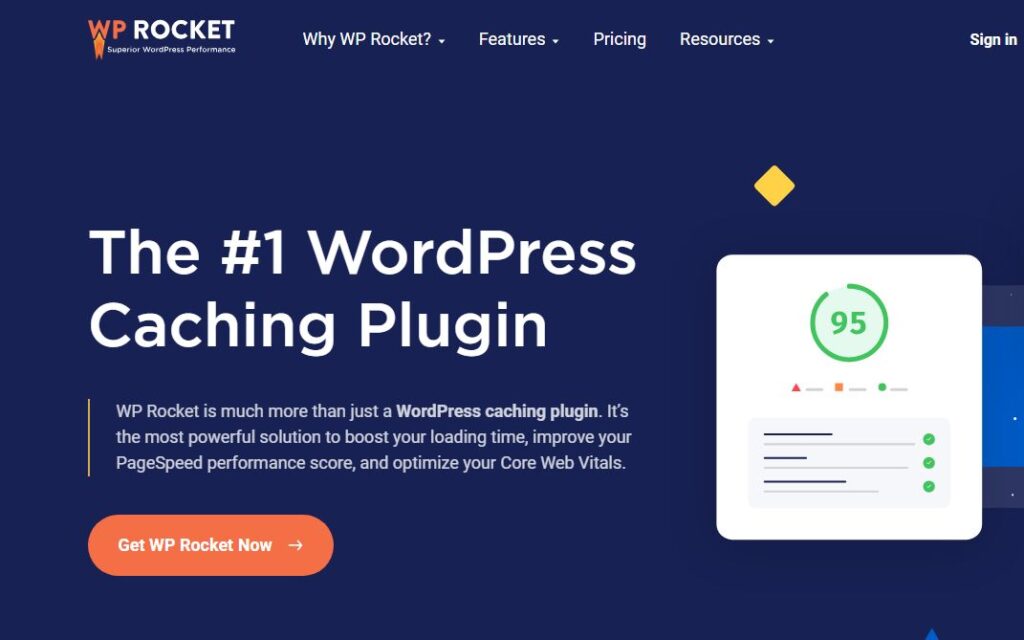

Mobile Optimization: Capture the 5.19 Billion Mobile Users
With over 5.19 billion mobile users worldwide, optimizing your website for mobile is no longer optional; it’s essential. Mobile optimization is a crucial aspect of your website’s structure, impacting both your search engine rankings and your ability to engage with a vast audience of mobile users. Search engines like Google use mobile-friendliness as a ranking factor, which means that websites optimized for mobile devices are more likely to achieve higher rankings.
Mobile optimization involves designing your website so it looks and performs well on mobile devices. This includes using responsive design, which automatically adjusts the layout of your website to fit the screen size of the device it’s being viewed on. Additionally, optimizing for mobile also means ensuring that your site’s navigation is easy to use on a touch screen and that your content is easily readable without needing to zoom in.
By focusing on mobile optimization, you’re not only improving your SEO rankings but also enhancing the user experience for the majority of internet users who access the web via mobile devices. This can lead to increased traffic, longer visit durations, and higher conversion rates, as users are more likely to engage with a site that provides a seamless mobile experience. In today’s mobile-first world, optimizing your website for mobile users is a critical step in maximizing your online visibility and success.
2. Conduct Comprehensive Keyword Research
“Keywords are the road signs that help lead search engines to your website.” This simple yet profound statement underscores the essence of keyword research in the realm of SEO. Conducting comprehensive keyword research is not just about identifying the terms your audience is searching for; it’s about understanding the intent behind those searches and aligning your content to meet those needs.
Keyword research serves as the foundation of a successful SEO strategy, guiding the creation of content that resonates with your target audience. It involves identifying both high-volume terms that can attract broad audiences and niche keywords that target specific segments. This dual approach ensures that your content can reach a wide audience while also catering to the needs of those looking for specialized information.
The benefits of thorough keyword research extend beyond just attracting more traffic. It allows for the creation of more relevant and valuable content, enhancing user engagement and satisfaction. By understanding and implementing the keywords your audience uses, you make your site more visible to those who are actively seeking the information, products, or services you offer. This strategic alignment between your content and your audience’s needs is what ultimately drives higher rankings in search engine results pages (SERPs) and fosters a loyal following.
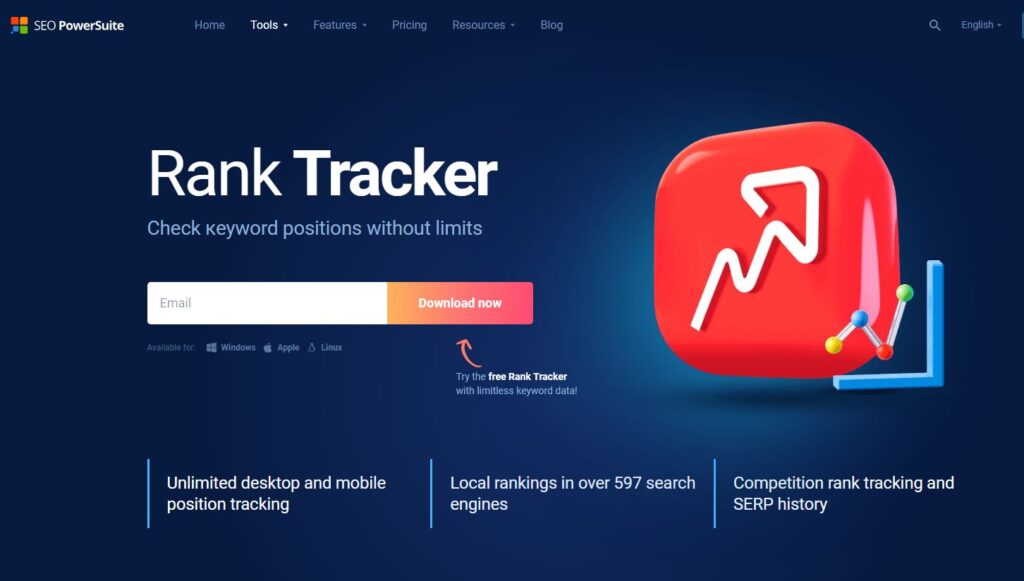

Unveiling Cutting-Edge Tools for Keyword Discovery
In the quest for the perfect keywords, having the right tools at your disposal can make all the difference. “The best SEO tools are like a compass; they point you in the direction where your audience is heading.” This rings true when it comes to discovering the keywords that your potential customers are using. Let’s explore three cutting-edge tools that are revolutionizing the way we approach keyword research.
First, Google’s Keyword Planner remains a staple in the SEO toolkit, offering insights into search volumes, competition levels, and related search terms. It’s an indispensable resource for anyone looking to optimize their website for Google’s search engine. Next, SEMrush offers a more comprehensive suite of tools, including keyword research, site audits, and competitor analysis. Its ability to provide detailed keyword metrics and trends makes it a favorite among SEO professionals. Lastly, Ahrefs stands out for its robust keyword explorer and content gap analysis feature, helping users to uncover opportunities their competitors might have missed.
Utilizing these tools can dramatically enhance your keyword research process, providing you with a wealth of data to inform your SEO strategy. By leveraging the insights they offer, you can identify high-potential keywords and phrases that align with your target audience’s search behavior, ensuring that your content remains relevant and competitive in the ever-changing landscape of search engine algorithms.
Strategic Keyword Placement: Elevate Your Content’s Reach
“Placing keywords strategically within your content is akin to placing signposts in a maze, guiding your audience right to your doorstep.” The strategic placement of keywords within your content is crucial for enhancing its visibility and relevance to search engines. It’s not just about peppering your articles with keywords; it’s about integrating them in a way that feels natural and adds value to the reader.
The title tag, headings, and the first paragraph are prime real estate for your primary keywords, signaling to search engines the main focus of your content. However, it’s equally important to sprinkle variations and related terms throughout the body, in image alt texts, and meta descriptions to enhance the depth of your content’s relevance. This not only helps search engines understand the context of your content but also increases the chances of it ranking for related queries.
Moreover, strategic keyword placement improves the user experience by making it easier for readers to find the information they’re looking for. By aligning your content with the search intent of your audience, you increase engagement, reduce bounce rates, and encourage visitors to explore your site further. Remember, the goal is to create content that satisfies both search engines and human readers, fostering a balance that drives traffic and conversion.
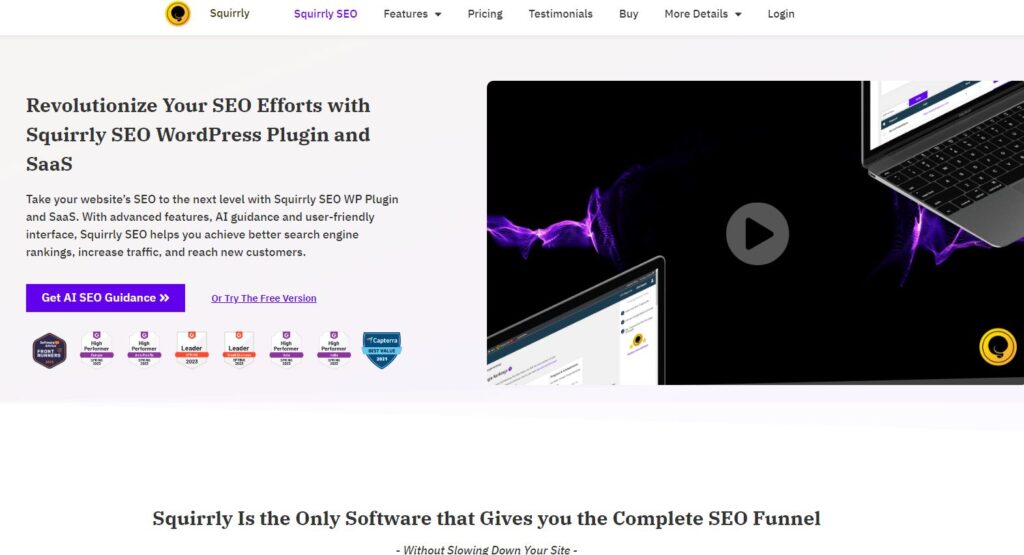

The Power of Long-Tail Keywords: Targeting Niche Audiences
“Long-tail keywords are the secret weapon for targeting niche audiences, offering a pathway to visibility in a crowded marketplace.” Unlike their shorter counterparts, long-tail keywords are more specific, often consisting of three or more words. They may attract less overall traffic, but the traffic they do bring is highly targeted, making it more valuable for businesses looking to connect with specific segments of their audience.
Long-tail keywords are especially beneficial for new websites or those in highly competitive markets, where ranking for broad terms can be challenging. By focusing on these longer, more specific phrases, you can capture the attention of users who are further along in the buying cycle, increasing the likelihood of conversion. These users know exactly what they’re looking for, and if your content matches their search intent, you’re more likely to make a meaningful connection.
Incorporating long-tail keywords into your content strategy allows you to address specific queries, answer detailed questions, and solve unique problems. This not only improves your SEO but also positions your brand as an authority in your niche. By understanding and leveraging the power of long-tail keywords, you can enhance your website’s visibility, attract a more engaged audience, and achieve better results from your SEO efforts.
3. Create High-Quality, Engaging Content
Just as a master chef combines ingredients to create a dish that delights the senses, so too must content creators blend information, relevance, and creativity to produce content that engages and informs. High-quality, engaging content is the cornerstone of any successful SEO strategy, serving as the medium through which you communicate your value proposition to both search engines and your audience.
Creating content that resonates with your audience begins with understanding their needs, interests, and pain points. This understanding allows you to craft content that not only ranks well in search engine results but also provides genuine value, establishing trust and authority in your niche. High-quality content is characterized by its ability to inform, entertain, and inspire action, making it a powerful tool for connecting with your audience.
Moreover, engaging content is shareable content. When readers find value in your content, they are more likely to share it with their networks, amplifying your reach and attracting more traffic to your site. This organic sharing boosts your site’s SEO by generating backlinks, increasing your online visibility, and enhancing your brand’s reputation. By prioritizing the creation of high-quality, engaging content, you lay the foundation for a robust online presence that attracts and retains a loyal audience.
Crafting Content That Ranks: A 5-Step Guide
Crafting content that ranks at the top of search engine results pages is akin to navigating a complex puzzle, where each piece represents a critical component of your SEO strategy. To assemble this puzzle successfully, follow a 5-step guide that ensures your content is optimized for both search engines and human readers.
First, conduct thorough keyword research to identify the terms and phrases your target audience uses when searching for information in your niche. Incorporating these keywords naturally within your content helps search engines understand its relevance to specific queries. Second, focus on creating content that addresses the needs and questions of your audience, providing them with valuable insights and solutions. This user-centric approach encourages engagement and improves dwell time, which are key factors in SEO rankings.
Third, structure your content with clear headings, subheadings, and short paragraphs to enhance readability and guide readers through your content. Fourth, incorporate internal and external links to provide further value and context, boosting your site’s authority and credibility. Lastly, regularly update your content to keep it fresh and relevant, signaling to search engines that your site is an active source of up-to-date information. By following these steps, you can craft content that not only ranks well but also genuinely engages your audience.
Leveraging Multimedia: Enhance Engagement with Images and Videos
In the digital age, content is more than just words on a page; it’s an immersive experience that can be enhanced through the strategic use of multimedia. Images and videos are powerful tools for breaking up text, illustrating concepts, and engaging users in a more dynamic way. Like spices that add depth and flavor to a dish, multimedia elements can enrich your content, making it more appealing and memorable to your audience.
Integrating high-quality images and videos can significantly improve user engagement by providing visual interest and supporting your written content. These elements can help explain complex ideas, showcase products, and tell stories in a way that text alone cannot. Moreover, multimedia can increase the time users spend on your page, a key metric that search engines consider when ranking content.
When using multimedia, it’s important to optimize these elements for SEO by including relevant keywords in file names, alt tags, and descriptions. This not only helps search engines understand the context of the visuals but also improves accessibility for users with visual impairments. By leveraging multimedia, you can create a more engaging and effective content strategy that captivates your audience and enhances your SEO efforts.
Optimize for Featured Snippets: A Shortcut to Position Zero
Featured snippets, often referred to as “Position Zero” in search results, represent a prime opportunity to increase your content’s visibility and click-through rate. These snippets provide users with a quick answer to their query directly on the search results page, making them a coveted spot for content creators and SEO strategists alike. Optimizing your content for featured snippets is like unlocking a shortcut to the top of the search rankings.
To optimize for featured snippets, structure your content in a way that directly answers common questions related to your topic. Use clear, concise language and format your answers in bullet points, numbered lists, or short paragraphs. Including a summary of the answer at the beginning or end of your content can also increase your chances of being featured.
Additionally, targeting long-tail keywords and question-based queries in your content can improve your likelihood of appearing in featured snippets. These types of searches are more likely to trigger snippet results, as they often seek specific information. By focusing on providing clear, authoritative answers to these queries, you can enhance your content’s chances of achieving Position Zero, driving more traffic to your site and boosting your overall SEO strategy.
4. Enhance Your Website’s Authority with Link Building
While many aspects of SEO are under your direct control, link building relies on the cooperation of others, making it a unique challenge. Yet, the power of high-quality backlinks in boosting your website’s authority and search engine rankings cannot be overstated. Link building is a cornerstone of any robust SEO strategy, essential for signaling to search engines that other websites consider your content valuable and trustworthy.
The process of acquiring backlinks from reputable sites can significantly elevate your website’s visibility and credibility. Search engines like Google use backlinks as a key ranking signal because they imply endorsement. The more reputable websites link to your content, the more search engines infer your site as a reliable source of information, thereby improving your rankings.
However, not all backlinks are created equal. The focus should always be on quality over quantity. A few backlinks from high-authority, relevant sites are far more beneficial than numerous links from low-quality, unrelated sites. Effective link building is about fostering relationships, creating outstanding content that others want to share, and strategically participating in the digital community to enhance your website’s authority and SEO performance.
The Art of Backlink Acquisition: 4 Proven Strategies
The art of acquiring backlinks is akin to networking in the professional world; it’s about building relationships and offering value. Here are four proven strategies to enhance your backlink portfolio: First, creating compelling, shareable content is the foundation. Without valuable content, even the best outreach strategies will fall flat. Content that educates, entertains, or solves a problem is more likely to be linked to.
Second, guest blogging remains an effective way to get your content in front of new audiences and secure backlinks from reputable sites in your industry. By contributing valuable insights and articles to other sites, you not only establish yourself as an authority but also create opportunities for natural backlinking. Third, leveraging social media to share your content can increase its visibility, encouraging shares and links from various sources.
Lastly, engaging in digital PR can secure high-quality backlinks from media outlets and industry influencers. By pitching newsworthy stories or insightful studies from your website, you can attract attention and links from major publications. These strategies require effort and persistence but can significantly impact your website’s authority and search engine rankings.
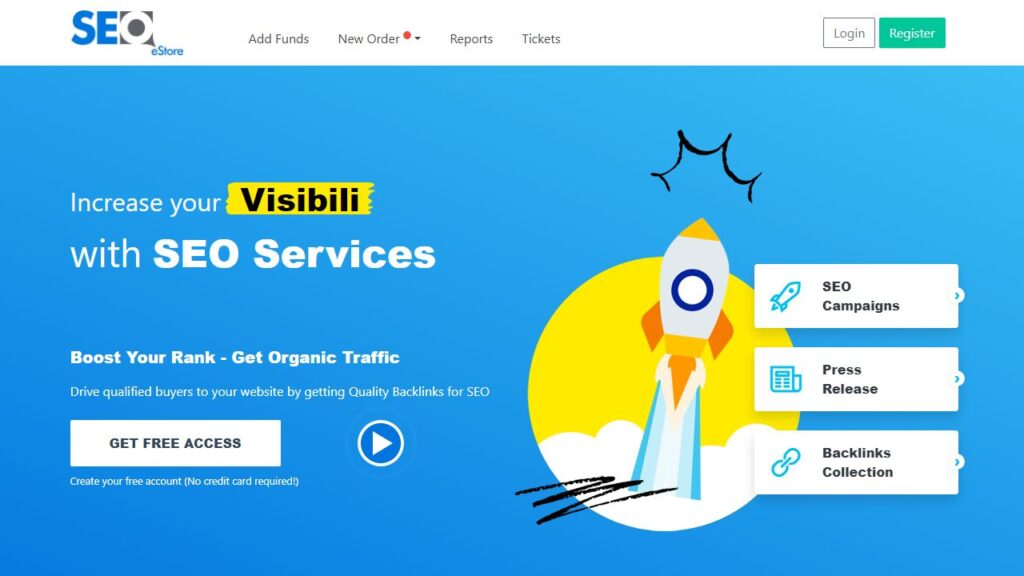

Internal Linking: Strengthen Your SEO Foundation
Internal linking, the practice of linking to other pages within your own website, is a powerful yet often overlooked aspect of SEO. It not only helps search engines discover and index your pages more effectively but also enhances user experience by providing them with additional relevant information. Effectively implemented internal links can guide visitors through your website, increasing engagement and reducing bounce rates.
By using descriptive anchor text that accurately reflects the linked page’s content, you can improve both usability and SEO. This clarity helps search engines understand the context and relationship between pages on your site, which can positively influence your rankings. Moreover, internal linking distributes page authority throughout your site, ensuring that valuable link equity is shared across all pages, not just concentrated on your homepage or top-level pages.
A strategic internal linking structure can act as a roadmap for search engines, highlighting your most important pages and how they relate to each other. This not only boosts the SEO performance of individual pages but also strengthens the overall SEO foundation of your site. When executed correctly, internal linking can be a simple yet effective tool in enhancing your website’s search engine visibility and user engagement.
Avoid Common Link Building Mistakes: Stay Ahead in 2024
As we look ahead to 2024, it’s crucial to stay informed about common link-building mistakes to avoid. These errors can not only hinder your SEO efforts but also potentially harm your website’s reputation and rankings. First, avoid excessive link exchanges, where you agree to link to a site in return for a link back. This practice can be seen as manipulative by search engines and may lead to penalties.
Second, steer clear of buying backlinks. While it might seem like a quick way to boost your site’s authority, search engines, especially Google, are increasingly adept at identifying and penalizing sites that engage in this practice. Investing in high-quality content that naturally attracts backlinks is a more sustainable and effective strategy.
Lastly, diversifying your backlink profile is essential. Relying too heavily on one type of link or source can raise red flags with search engines. Aim for a natural-looking backlink profile with links from a variety of reputable sources and different types of content. By avoiding these common mistakes and focusing on ethical, strategic link-building practices, you can ensure your website remains competitive and authoritative in the evolving landscape of SEO.
5. Measure and Refine Your SEO Strategy
It might come as a surprise to learn that nearly half of all businesses don’t have a documented SEO strategy, let alone measure its performance regularly. This oversight can lead to missed opportunities for improvement and growth. Measuring and refining your SEO strategy is essential for staying ahead in the competitive digital landscape. It’s not enough to simply implement SEO practices; you must also track their performance and adjust your tactics accordingly.
The first step in this process is setting clear, measurable goals that align with your business objectives. Whether it’s increasing organic traffic, improving keyword rankings, or boosting conversion rates, having specific targets in place will guide your SEO efforts and provide a benchmark for success. Next, regular analysis of your SEO performance against these goals is crucial. This involves monitoring key metrics, identifying trends, and understanding the impact of your SEO activities.
Finally, refining your SEO strategy should be an ongoing process. Based on the insights gained from your performance analysis, make data-driven decisions to optimize your tactics. This could involve tweaking your content strategy, revising your keyword focus, or adjusting your link-building approach. By continuously measuring and refining your SEO strategy, you can ensure that your efforts are aligned with the changing digital environment and your business’s evolving needs.
Key Performance Indicators: Tracking Your Success
In the world of SEO, not all metrics are created equal. Key Performance Indicators (KPIs) are the compass that guides your strategy, providing clear insights into what’s working and what’s not. Identifying and tracking the right KPIs is crucial for evaluating the success of your SEO efforts and making informed decisions. Some of the most important KPIs include organic traffic, keyword rankings, click-through rates (CTRs), backlink quality and quantity, and conversion rates.
Organic traffic, the number of visitors coming to your site from search engines, is a direct reflection of your SEO performance. An increase in organic traffic indicates that your site is becoming more visible and attractive to your target audience. Keyword rankings are another vital KPI, showing how well your content aligns with user queries. High rankings for relevant keywords mean that your content is considered authoritative and valuable by search engines.
Monitoring these KPIs allows you to gauge the effectiveness of your SEO strategy and identify areas for improvement. Regularly reviewing your performance against these indicators can help you adjust your approach, focus on what works, and ultimately achieve better results. Remember, the goal is not just to attract traffic, but to drive relevant traffic that converts into leads and customers.
Utilizing SEO Analytics: Make Data-Driven Decisions
In today’s data-driven world, SEO analytics are more than just numbers; they’re insights that can propel your strategy forward. Utilizing SEO analytics tools can uncover a wealth of information about your website’s performance, audience behavior, and competitive landscape. These insights enable you to make informed decisions that can significantly impact your SEO success.
By delving into analytics, you can identify which pages are performing well and which ones are lagging, allowing you to optimize content and structure for better engagement. You can also understand how users interact with your site, which keywords drive traffic, and where your backlinks are coming from. This level of detail is invaluable for refining your SEO strategy to better meet your audience’s needs and search intent.
Moreover, SEO analytics can reveal emerging trends and shifts in user behavior, giving you the opportunity to adapt your strategy proactively. By staying ahead of the curve, you can ensure that your website remains relevant and competitive. Embracing SEO analytics is not just about solving problems; it’s about seizing opportunities to enhance your online presence and achieve greater visibility.
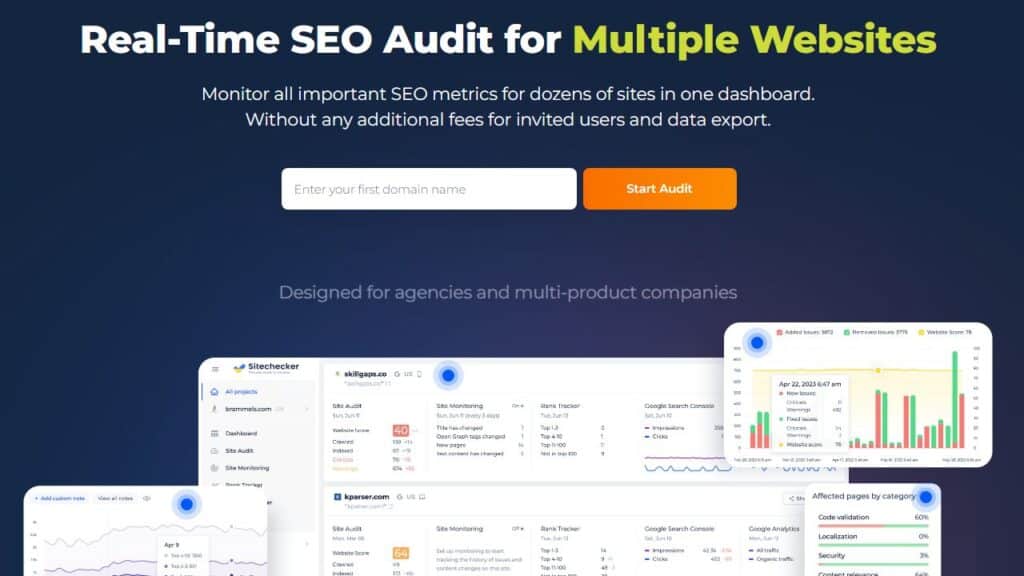

A/B Testing: Fine-Tune Your Strategy for Maximum Impact
A/B testing, or split testing, is a powerful tool to fine-tune your SEO strategy and maximize its impact. This method involves comparing two versions of a web page to see which one performs better in terms of SEO metrics such as click-through rates, conversion rates, or time on page. By making controlled changes to elements of your website and observing the outcome, you can make data-driven decisions that enhance your SEO performance.
Whether it’s experimenting with different headlines, meta descriptions, or content formats, A/B testing allows you to understand what resonates most with your audience and search engines. This empirical approach removes guesswork from the equation, enabling you to optimize your website based on actual performance data. The insights gained from A/B testing can lead to significant improvements in user experience and SEO results.
Implementing A/B tests requires a systematic approach, including defining clear objectives, selecting relevant metrics, and ensuring that tests are run for a sufficient duration to collect meaningful data. By embracing A/B testing as part of your SEO strategy, you can continuously improve your website’s effectiveness, ensuring that it not only attracts but also engages and converts your target audience. This ongoing process of testing and refinement is key to staying competitive in the ever-evolving landscape of search engine optimization.
Your Path to SEO Mastery Begins Today
Embarking on the journey to SEO mastery might seem daunting at first, but with the right strategies and a willingness to learn, anyone can enhance their online visibility and achieve their digital marketing goals. This guide has laid out foundational principles and advanced tactics alike, aiming to equip you with the knowledge needed to navigate the complexities of SEO. Remember, the path to mastery is ongoing, and the digital landscape is always evolving.
Staying informed about the latest trends and algorithm updates is crucial for maintaining and improving your SEO performance. However, the core principles of creating high-quality, engaging content, optimizing your website structure, conducting comprehensive keyword research, building authoritative backlinks, and measuring your success will remain relevant. These strategies are your compass in the vast and sometimes turbulent sea of digital marketing.
Your journey to SEO mastery is unique, filled with opportunities to learn, experiment, and grow. By applying the strategies discussed, continuously refining your approach, and staying adaptable to changes, you’re setting the stage for lasting success. SEO is not just about ranking higher in search engine results—it’s about connecting with your audience, providing value, and building trust. Start today, and let each step forward open new doors to opportunities and achievements in the digital world.

